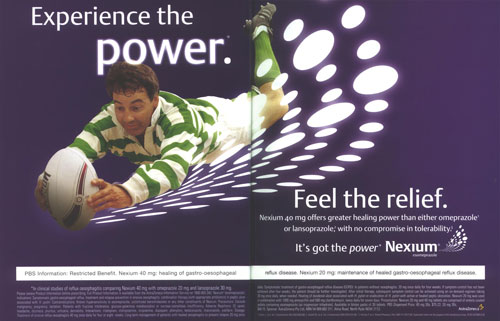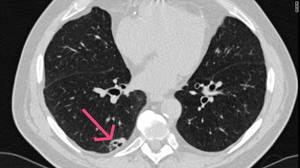A Deal Is A Deal: Ecogen Wind Prevails In Windfarming Dispute
By admin on January 7, 2014
 The New York Law Journal reported on January 2, 2014 that the Town of Prattsburgh, which, during the relevant time, had virtually no laws, codes or requirements on the books governing the installation of wind turbine facilities, was not permitted by the court to retroactively preclude Ecogen Wind from building a wind farm in Steuben County, New York.
The New York Law Journal reported on January 2, 2014 that the Town of Prattsburgh, which, during the relevant time, had virtually no laws, codes or requirements on the books governing the installation of wind turbine facilities, was not permitted by the court to retroactively preclude Ecogen Wind from building a wind farm in Steuben County, New York.
In a unanimous Memorandum and Order issued by the Appellate Division, Fourth Department on December 27, 2013, in Ecogen v. Town of Prattsburgh, CA 12-02307 (4th Dept. December 27, 2013) the court applied traditional contract jurisprudence to prevent the Town of Prattsburgh from voiding the terms of a settlement of prior litigation with Ecogen Wind that permitted the wind farm development to proceed.
The court held that the “parties were bound by the terms of the settlement and the court was bound to enforce it.” In March 2009, Ecogen Wind was advised in writing by the Code Enforcement Officer for the Town of Prattsburgh that there was no legal impediment to building wind turbines within the municipality and that no permits were needed.
According to the Ecogen website, the company:
….. proposes to construct 34 ± wind turbine units for the purpose of generating 79.5 megawatts, or less, of electricity in the Town of Prattsburgh, Steuben County and the Town of Italy, Yates County, New York. An overall study area of approximately 24,000 acres was identified within which the individual sites for the turbine units will be selected.
Early on, Ecogen submitted an application to the Steuben County Industrial Development Agency ("SCIDA") for financial assistance relative to the proposed project.
("SCIDA") for financial assistance relative to the proposed project.
In its role as lead agency, SCIDA initiated the environmental review process pursuant to the State Environmental Quality Review Act (6 NYCRR Part 617) and performed a coordinated review with other involved or interested agencies. SCIDA issued a Positive Declaration, requiring preparation of an Environmental Impact Statement In accordance with 6 NYCRR Part 617. A Generic Environmental Impact Statement was selected as an appropriate means to assess potential impacts for the project.
Despite there being no applicable zoning law or building code provision, Ecogen Wind still sought formal town approval in an effort to accommodate local concerns about the project. But Ecogen, which had the necessary state permits to proceed, was unable to reach agreement with the town and commenced an Article 78 action. The parties settled the case in late 2009 acknowledging that “no rules, permits or other authorizations from the town are required… to develop, construct and operate the project.”
Shortly thereafter, a new town board came into office that was unhappy with the deal struck by its predecessors. The new board repudiated the agreement, rescinded the settlement and imposed a moratorium on windfarming. As reflected by the Appellate Division’s decision, a municipality cannot have second thoughts and renege on the agreement once a settlement is reached.
Although it is difficult to gauge the intensity of the debate over the project without living in upstate New York and participating first hand, it may be inferred from a review of the website of Advocates for Prattsburgh that tensions were high among townspeople when the new town board came into office and sought to rescind the deal.
In its Mission Statement, Advocates for Prattsburgh makes an impassioned plea to support the opposition effort:
Located in northern Steuben County and nestled between Keuka and Canandaigua Lakes, Prattsburgh, NY is an idyllic township of hills, woods and farms. Advocates for Prattsburgh is a not-for-profit, volunteer organization run and financially supported by and offering a voice to resident and non-resident Prattsburgh landowners, as well as concerned citizens in the surrounding towns. Two wind farm companies – Ecogen and UPC – plan to construct nearly one hundred, 400′ high wind turbines in Prattsburgh, interspersed between the homes and properties of non-participating landowners. The noise, negative health effects, ice throws and overwhelming visual dominance of these huge industrial machines pose a severe threat to our town, the value of our property, our personal safety, and our freedom to live our lives in peace and quiet. Recent action by the Prattsburgh Town Board to use eminent domain to condemn the land of property owners who refused to grant easements to UPC for the Windfarm Prattsburgh Project should be a wake-up call for what is planned for our future and our freedoms.
Our position is not against wind power, but against the inappropriate siting of these industrial wind turbines. These massive, 400′ high factories should be placed in an industrial park, in which all the property within its boundaries is contiguous and is either owned by, leased to, or easements voluntarily granted to the wind power companies. The siting of these turbines within this industrial park should also be set back from the properties lines of non-participating landowners sufficient to protect the personal health and safety of property owners, the value of their homes, and their desire not to be dominated by noise-making adjacent factories as tall as the pyramids of Egypt.
Public concerns over these potential environmental impacts, both real and imagined, represent the biggest challenge the wind industry faces in siting these projects. A map of the project (as depicted by the Advocates for Prattsburgh) is attached.

 No matter how conscientious, environmental lawyers, like other attorneys, are regularly sued for legal malpractice. It is not difficult to imagine some of the dicey situations where the environmental practitioner may fall prey to such claims:
No matter how conscientious, environmental lawyers, like other attorneys, are regularly sued for legal malpractice. It is not difficult to imagine some of the dicey situations where the environmental practitioner may fall prey to such claims: contract and tort claims can have significant ramifications for the contracting parties if the business relationship falls apart and litigation results. Under New York law, how the parties negotiate the allocation of risk of loss is enormously important.
contract and tort claims can have significant ramifications for the contracting parties if the business relationship falls apart and litigation results. Under New York law, how the parties negotiate the allocation of risk of loss is enormously important. Regulatory enforcement by the
Regulatory enforcement by the  liability litigation in “
liability litigation in “ This rule is not always followed in practice. The Sixth Circuit recently admitted evidence of CPSC inaction, despite the regulation, as evidence that the manufacturer did not violate safety rules. See,
This rule is not always followed in practice. The Sixth Circuit recently admitted evidence of CPSC inaction, despite the regulation, as evidence that the manufacturer did not violate safety rules. See, 
 To test your “Greenwashing” prowess, you can go on the UL site called the “Sins of Greenwashing:
To test your “Greenwashing” prowess, you can go on the UL site called the “Sins of Greenwashing: Home and Family Edition” and play “
Home and Family Edition” and play “ Organic Mattress Industry (“NAOMI”). According to the FTC’s complaint, however, NAOMI is simply an alter ego of EcoBaby, which awards seals to its own products. Thus, NAOMI is not an independent third-party, although a consumer might reasonably believe it is. Who has the time to research whether an environmental certification is legitimate or not? The
Organic Mattress Industry (“NAOMI”). According to the FTC’s complaint, however, NAOMI is simply an alter ego of EcoBaby, which awards seals to its own products. Thus, NAOMI is not an independent third-party, although a consumer might reasonably believe it is. Who has the time to research whether an environmental certification is legitimate or not? The  Commensurate with the increase in FTC enforcement claims may be claims by companies against their own suppliers. A manufacturer who advertises to consumers should exercise reasonable caution before relying on its supplier’s representations concerning the environmental attributes of ingredients that they incorporate in their products. The Green Guides apply not only to the environmental attributes of a product, but to the environmental attributes of packaging as well as service provided in connection with marketing as well.
Commensurate with the increase in FTC enforcement claims may be claims by companies against their own suppliers. A manufacturer who advertises to consumers should exercise reasonable caution before relying on its supplier’s representations concerning the environmental attributes of ingredients that they incorporate in their products. The Green Guides apply not only to the environmental attributes of a product, but to the environmental attributes of packaging as well as service provided in connection with marketing as well.  lower court erred in failing to consider flaws in plaintiffs’ damages model merely because the damages model would be pertinent on merits issues…..thus, "running afoul of our precedents requiring precisely that inquiry". It was up to the district court to determine whether the expert’s methodology was "just and reasonable inference or speculative."
lower court erred in failing to consider flaws in plaintiffs’ damages model merely because the damages model would be pertinent on merits issues…..thus, "running afoul of our precedents requiring precisely that inquiry". It was up to the district court to determine whether the expert’s methodology was "just and reasonable inference or speculative."  Plaintiffs alleged that they paid higher prices for Nexium because less expensive generic versions of Nexium were prevented from coming onto the market due to AstraZeneca’s settlement with three generic manufacturers. The end-payors (as the plaintiffs called themselves) sought to certify a sprawling Rule 26(b)(3) class consisting of virtually every consumer (insured and uninsured), commercial insurer, health plan and pharmacy benefit manager who had paid any portion of the purchase price for Nexium for a six year period in twenty-six states.
Plaintiffs alleged that they paid higher prices for Nexium because less expensive generic versions of Nexium were prevented from coming onto the market due to AstraZeneca’s settlement with three generic manufacturers. The end-payors (as the plaintiffs called themselves) sought to certify a sprawling Rule 26(b)(3) class consisting of virtually every consumer (insured and uninsured), commercial insurer, health plan and pharmacy benefit manager who had paid any portion of the purchase price for Nexium for a six year period in twenty-six states. would continue to purchase branded Nexium after generic entry due to preference or their physician’s recommendation. Such brand loyalists would potentially have faced higher Nexium prices had generic Nexium been available.
would continue to purchase branded Nexium after generic entry due to preference or their physician’s recommendation. Such brand loyalists would potentially have faced higher Nexium prices had generic Nexium been available. meet their burden of Rule 26(b)(3) that questions of law or fact common to class members predominated over any questions affecting only individual members, the district court denied class certification.
meet their burden of Rule 26(b)(3) that questions of law or fact common to class members predominated over any questions affecting only individual members, the district court denied class certification. By way of background, on May 1, 2013, the Second Circuit certified to the Court of Appeals the question whether, under New York law, a current or former long-term smoker who has not been diagnosed with a smoking-related disease, and who is not under investigation by a physician for a such a suspected disease, may pursue an independent equitable cause of action for
By way of background, on May 1, 2013, the Second Circuit certified to the Court of Appeals the question whether, under New York law, a current or former long-term smoker who has not been diagnosed with a smoking-related disease, and who is not under investigation by a physician for a such a suspected disease, may pursue an independent equitable cause of action for  To rule otherwise would disregard important medical, scientific and legal distinctions between concepts of “exposure” and “injury.”
To rule otherwise would disregard important medical, scientific and legal distinctions between concepts of “exposure” and “injury.” The court was correctly concerned that dispensing with the physical injury requirement could permit “tens of millions” of potential plaintiffs to recover medical monitoring costs, effectively flooding the courts while concomitantly depleting the alleged purported tortfeasor’s resources for those who have actually sustained damage. Although not discussed by the court as part of its rationale, the danger of fraudulent claims and abuse by uninjured plaintiffs cannot be overlooked as well.
The court was correctly concerned that dispensing with the physical injury requirement could permit “tens of millions” of potential plaintiffs to recover medical monitoring costs, effectively flooding the courts while concomitantly depleting the alleged purported tortfeasor’s resources for those who have actually sustained damage. Although not discussed by the court as part of its rationale, the danger of fraudulent claims and abuse by uninjured plaintiffs cannot be overlooked as well. The Army’s development of clean domestic energy resources strengthens national security and plays an important role in helping it to achieve its primary mission. As the world’s largest consumer of energy, the military’s recognition of the importance of reducing energy use and diversifying energy supplies, particularly beginning a shift from oil, has important ramifications for the economy and the environment.
The Army’s development of clean domestic energy resources strengthens national security and plays an important role in helping it to achieve its primary mission. As the world’s largest consumer of energy, the military’s recognition of the importance of reducing energy use and diversifying energy supplies, particularly beginning a shift from oil, has important ramifications for the economy and the environment. Simpson Thacher & Bartlett’s offices in New York. The speakers included
Simpson Thacher & Bartlett’s offices in New York. The speakers included  The billions of dollars that Army is shifting toward solar energy, recycled water and better-insulated tents is not about saving the earth. Instead, commanders in Afghanistan have found that they can significantly reduce casualty rates through energy conservation. In Afghanistan, protecting fuel convoys is one of the most dangerous assignments. At the meeting, one participant with combat experience discussed how flying barrels of oil to remote parts of Afghanistan, apart from the exorbitant cost, places American lives at risk. Every humvee tow vehicle is subject to IED attack or ambush.
The billions of dollars that Army is shifting toward solar energy, recycled water and better-insulated tents is not about saving the earth. Instead, commanders in Afghanistan have found that they can significantly reduce casualty rates through energy conservation. In Afghanistan, protecting fuel convoys is one of the most dangerous assignments. At the meeting, one participant with combat experience discussed how flying barrels of oil to remote parts of Afghanistan, apart from the exorbitant cost, places American lives at risk. Every humvee tow vehicle is subject to IED attack or ambush.  At one remote Afghan base in Ghazni Province, there was so little available power that the base commander had to tap into the humvees for some power, which required soldiers to drive the vehicles around at night to recharge the batteries. That problem was remedied when the base received a hybrid solar-diesel generator with capacity to store power for use after dark.
At one remote Afghan base in Ghazni Province, there was so little available power that the base commander had to tap into the humvees for some power, which required soldiers to drive the vehicles around at night to recharge the batteries. That problem was remedied when the base received a hybrid solar-diesel generator with capacity to store power for use after dark. A potential stumbling block to achieving these ambitious goals is the U.S. House of Representatives. The House has voted to ban DOD from purchasing biofuels until they are cheaper than fossil fuels. There is also a move underway to prevent DOD from pursuing the development of advanced biofuels. These and other regressive House initiatives threaten to force the military to go backward, hurt national and economic security, and jeopardize a fledgling American energy industry.
A potential stumbling block to achieving these ambitious goals is the U.S. House of Representatives. The House has voted to ban DOD from purchasing biofuels until they are cheaper than fossil fuels. There is also a move underway to prevent DOD from pursuing the development of advanced biofuels. These and other regressive House initiatives threaten to force the military to go backward, hurt national and economic security, and jeopardize a fledgling American energy industry.  that about 12 percent of spices brought to the United States are contaminated with insect parts, whole insects, rodent hairs and other things, based upon an analysis of spice imports.
that about 12 percent of spices brought to the United States are contaminated with insect parts, whole insects, rodent hairs and other things, based upon an analysis of spice imports. targeted by plaintiff lawyers. One prominent defense firm is urging its clients to be prepared by assembling a litigation response team to develop a "thorough traceback program through which food items can be traced back to their origins". This firm cautions that defending these cases is not for amateurs, but requires the "coordination of expedited investigation and documentation, evidence location and preservation, supplier agreements and indemnification commitments, selection of and consultation with (often) a constellation of experts…."
targeted by plaintiff lawyers. One prominent defense firm is urging its clients to be prepared by assembling a litigation response team to develop a "thorough traceback program through which food items can be traced back to their origins". This firm cautions that defending these cases is not for amateurs, but requires the "coordination of expedited investigation and documentation, evidence location and preservation, supplier agreements and indemnification commitments, selection of and consultation with (often) a constellation of experts…."